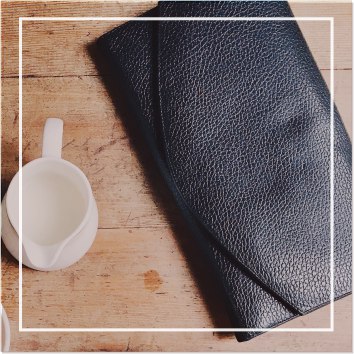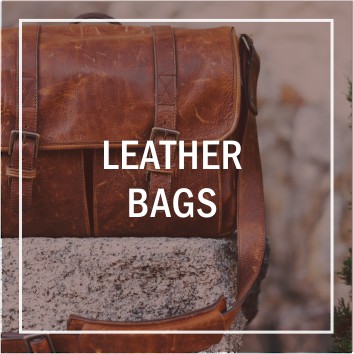Blog
The Art of Crafting Quality Leather Goods: A Behind-the-Scenes Look

The Art of Crafting Quality Leather Goods: A Behind-the-Scenes Look
Leather goods are timeless, often seen as a symbol of craftsmanship, quality, and sophistication. Whether it's a finely stitched handbag, a well-worn leather wallet, or a sleek pair of boots, the art of creating leather products is both a skill and a passion. At AquaExim, we understand the importance of craftsmanship in producing leather goods that not only stand the test of time but also reflect the skill and precision of artisans behind the scenes. In this blog post, we’ll take you through the process of crafting quality leather goods and explore the dedication required to bring these products to life.
1. Selecting the Right Leather: The Foundation of Craftsmanship
The journey of creating high-quality leather goods begins with selecting the perfect piece of leather. Leather varies greatly in terms of texture, thickness, and grain, and the choice of material can make all the difference in the final product. Whether it's full-grain leather, which preserves the hide’s natural imperfections, or top-grain leather, which has been refined for a more uniform appearance, the decision on which leather to use sets the tone for the entire piece.
Experienced artisans know that the right leather ensures durability, flexibility, and a beautiful finish. At AquaExim, we prioritize sourcing leather from trusted tanneries that use ethical practices and sustainable methods to ensure both quality and environmental responsibility.
2. Preparing the Leather: Cutting and Shaping
Once the leather is selected, the next step is preparing it for crafting. Leather pieces are carefully inspected for flaws and inconsistencies. Once the leather passes this inspection, it is cut into shapes using patterns designed specifically for the product being made.
For products like bags, wallets, and shoes, precision is key. The artisan must carefully align the grain and texture of the leather to ensure the final product has a consistent and appealing look. Cutting leather is often done by hand using sharp knives or specialized tools, though some modern manufacturers may use laser cutters for highly detailed designs.
During this phase, the leather is also conditioned to soften and prevent any stiffness that might occur after being stored. This step ensures that the leather is easier to work with and that it will maintain its softness and flexibility in the final product.
3. Crafting the Details: Stitching and Assembly
Stitching is perhaps the most recognizable aspect of leather crafting. It’s the step that transforms raw leather into a refined, functional product. This stage requires great skill and patience. Leather stitching is typically done by hand using specialized needles and waxed thread. This technique not only ensures the seams are sturdy but also allows the artisan to add intricate details to the product.
In high-end leather goods, hand-stitching is often preferred over machine stitching because it provides greater control and results in a more aesthetically pleasing finish. Every stitch is strategically placed to enhance the leather’s natural appearance, creating a clean, uniform pattern that showcases the craftsmanship of the artisan.
In addition to stitching, various techniques like embossing, debossing, or carving can be used to add texture and design elements to the leather. These decorative touches add individuality and sophistication to the product, often making each piece one-of-a-kind.
4. Finishing Touches: Dyeing, Polishing, and Sealing
After the product is stitched together, the leather undergoes finishing processes to enhance its color, texture, and durability. Dyeing is one of the most important steps in this phase. Leather can be dyed in a wide range of colors, but the process requires expertise to ensure the dye is absorbed evenly and doesn’t damage the leather’s integrity. Whether using vegetable dyes or synthetic dyes, the aim is to preserve the leather’s natural characteristics while achieving a vibrant, lasting color.
Once dyed, the leather is carefully polished to bring out its sheen and smoothness. This not only adds to the visual appeal but also helps protect the leather from wear and tear. Finally, a protective coating or sealant is applied to safeguard the leather from moisture, stains, and scratches.
At AquaExim, we believe in striking the perfect balance between enhancing the leather’s natural beauty and ensuring its long-lasting durability. The finishing touches are what elevate a leather product from good to exceptional.
5. Quality Control: Ensuring Excellence
No leather product leaves the workshop without undergoing rigorous quality control. Each piece is carefully inspected for flaws in stitching, coloring, and finish. Leather goods undergo stress testing to ensure they can withstand the daily wear and tear their customers will put them through.
Quality control also involves checking the alignment of seams, ensuring that all components fit together perfectly, and verifying that the leather has been treated and protected properly. For instance, bags and wallets are checked for zipper functionality, clasp security, and internal structure. The goal is to ensure that every item meets the highest standards of craftsmanship and durability.
6. Packaging and Presentation: Showcasing the Craft
Once the leather goods pass the quality control stage, they are carefully packaged and prepared for shipment. Packaging is not just about protecting the product; it’s also about presenting it in a way that reflects the high-quality craftsmanship. At AquaExim, we use elegant packaging that showcases the beauty of the leather goods, ensuring customers receive their products in pristine condition.
The packaging often includes a dust bag or protective cover to ensure the leather stays clean and safe during transport. Each product is carefully wrapped to maintain its shape and avoid any creases or scratches before it reaches the customer.
Conclusion
Crafting quality leather goods is an art that requires a blend of skill, attention to detail, and a passion for perfection. From selecting the right leather to the final touches of stitching and finishing, every step is crucial in creating a product that stands out for its durability, elegance, and quality. At AquaExim, we take pride in our craftsmanship, ensuring that every leather piece we create is a testament to the dedication and expertise of our artisans. Whether you're creating leather handbags, wallets, or furniture, the journey of crafting quality leather goods is one of artistry, precision, and a deep respect for tradition.
Related Posts
Choosing the Right Leather for Your Products: A Guide for Manufacturers
-
Posted by
Aquaexim
- 0 comments
Choosing the Right Leather for Your Products: A Guide for Manufacturers
-
Posted by
Aquaexim
- 0 comments


